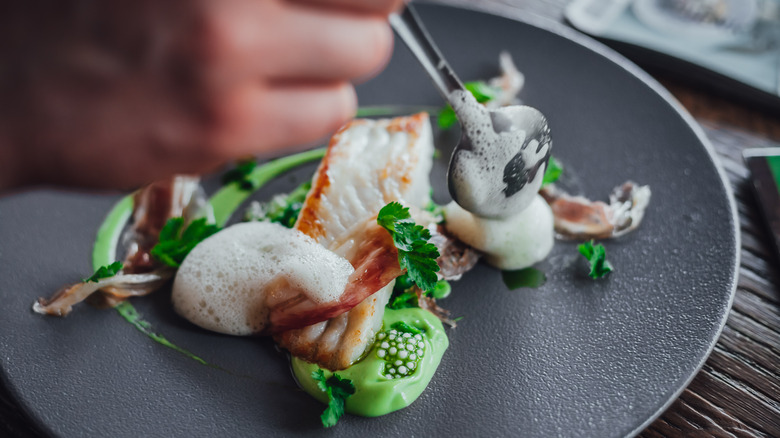Why Michelin's Rising Star Designation Is So Confusing
The Michelin Guide started over 100 years ago, initially providing free road trip logistics, such as tire shops and refuel stations. Not long after, the Michelin brothers realized that their restaurant reporting imparted greater influence, so they hired the now infamous (and feared) restaurant inspectors. In 1926, the first Michelin Star was awarded (via the Michelin Guide).
Originating from this single accolade, Michelin now has a full-fledged empire of food distinctions. There's the well-known three-star system, the bib gourmand for more affordable dining, and a newly introduced green star (so far exclusive to the British Isles) which notes restaurants with sustainable practices, per Michelin. Additionally, Michelin created special award winners, designating more specific recognition for both individuals and establishments, like sommeliers, chef mentors, and new openings, as shown on their Great Britain and Ireland 2022 Release.
Sounds extensive, right? Well turns out there is another form of Michelin recognition, in existence since 2005, yet mysteriously out of the spotlight, explains Fine Dining Lovers. In The Caterer, Derek Bulmer, Michelin editor for the U.K. and Ireland explains the Rising Star: a distinction, not an award, to separate the restaurants in the upper tier of a star-awarded restaurants versus the establishments that could receive one or add one to their collection. Yet still, it's never printed in country guides, seldom noted in the press, and not even mentioned on the Michelin website. So what is the Rising Star, and why is it so confusing?
Michelin's Rising Star notes restaurants that might receive an award
The Rising Star was first given to restaurants with one or two stars, right on the cusp of receiving one more, according to Fine Dining Lovers. These noted establishments hold the accolade for two years and are not guaranteed to receive a star upgrade. A couple of years later, Michelin also expanded Rising Stars to restaurants with zero stars, right on the cusp of noteworthy recognition. Perhaps the Rising Star's mysterious nature stems from the negativity laced in the award. A Michelin blurb published in The Caterer states that Rising Stars are given to restaurants "[that] could move up to the next category once they demonstrate greater consistency." Such verbiage doesn't come across as laudatory — especially for restaurants already noted in Michelin but coveting an additional star.
Running a fine-dining restaurant is relentlessly tiresome, mentally-taxing work. Moreover, with Michelin's influence, chasing the third star is an endeavor that can derail chefs' lives and careers, as detailed in The New Yorker. Add in the uncertainty, only 50% of Rising Star restaurants convert their star, says The Caterer, and it makes sense it's not something restaurants would proudly display.
So why is the distinction seldom published, and not officially listed in the Michelin Guide? Hard to say — perhaps it's due to its ambiguous reputation, or Michelin's own rejection of calling it an award. Take The Guardian's press release of U.K. Michelin restaurants –the Rising Star is mentioned, but only for a restaurant that converted it into a star.

